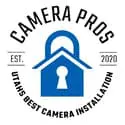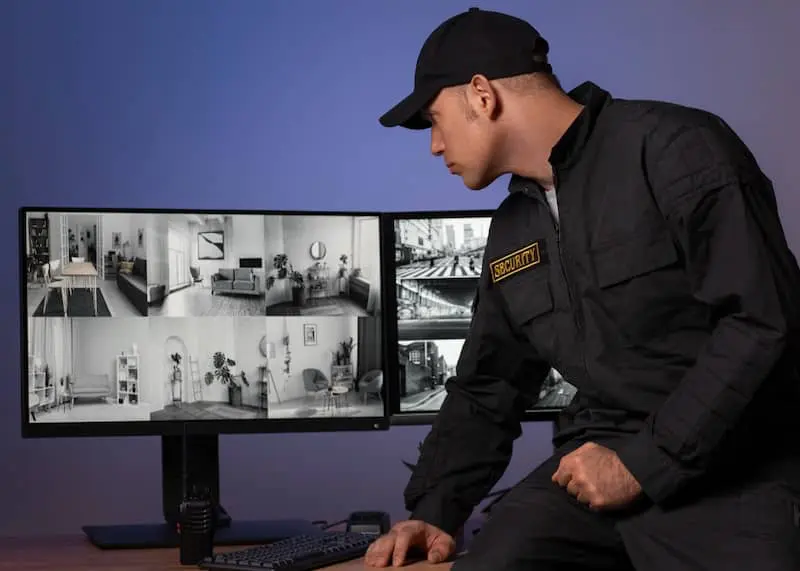Investing in a commercial CCTV installation sends a clear message to your insurer that you’re serious about reducing risks. Insurance companies set premiums based on how likely losses are to happen. When you show you have cameras and motion detectors in place, you’re lowering those risks and making your business look safer.
Think of your CCTV system as both a crime deterrent and a way to gather proof. Burglars are less likely to target a place with cameras, and if something does happen, recorded footage makes handling claims much faster. This proactive approach can help bring down your liability and property insurance rates because insurers anticipate fewer claims and better risk control.
Table of Contents
ToggleHow Insurers Evaluate CCTV Systems
Insurance underwriters consider a wide range of security measures, such as quality locks and alarm systems, when deciding coverage and rates. But your CCTV system can stand out because it’s visible and offers 24/7 protection. That visibility alone can make potential thieves think twice, which is exactly what insurers like to see.
When it’s time to renew your policy or apply for coverage, don’t hold back from highlighting the strength of your system. Talk about how reliable it is. Mention details like consistent uptime and recording quality. It’s also important to mention whether your system includes professional-grade cameras. Insurers also care about security features like:
- Remote viewing so you can monitor footage from anywhere
- Redundant storage to ensure you don’t lose important video
- Integration with alarms or access control systems for a fully connected security setup
The more you can show that your system is built to reduce risk and prevent losses, the better your chance of negotiating lower insurance premiums. It’s all about having the right cameras in the right places, with the right features to back them up.
Demonstrating Compliance and Reducing Risk
To benefit from lower premiums, you must show that your CCTV system meets or exceeds insurer requirements. You can achieve this by following best practices:
- Use cameras with strong night vision to ensure clear footage around the clock
- Store footage for the recommended retention period based on your business type and risk level
- Perform regular system checks to catch issues early and keep everything running smoothly
- Log maintenance visits and test recordings to show insurers you’re taking a responsible, risk-focused approach
When a claim arises, clear video evidence can validate your narrative. Cameras also reduce investigation costs and limit liability exposure. That kind of transparency typically results in fewer disputes and faster resolutions. Over time, insurers reward that reliability with better premium terms.
Real‑World Savings You Can Expect
When you add CCTV monitoring, you may see savings on your property or liability premiums. The exact savings depend on several factors, including your industry, location, claim history, the value of your assets, and the overall strength of your security measures. For example, retail businesses in areas prone to theft may receive steeper discounts than low‑risk office environments. Speak with your broker to clarify the exact value of your system in your context.
Even if the premium reduction doesn’t immediately cover the upfront cost of your system, those insurance savings add up over time. And while the financial payoff grows, you’ll have the added reassurance of knowing your property is better protected every day.
Choosing the Right CCTV System for Insurance Benefits
Your CCTV system needs to do more than record footage to lower your insurance premiums. It should demonstrate that you take security seriously. The most effective setups combine high-quality imaging with broad, consistent coverage.
Look for cameras that capture clear footage both during the day and at night, so there’s no ambiguity in your recordings. Systems with remote monitoring capabilities show insurers that your property is actively watched, not just passively recorded. It’s also important to store your video securely, and the system should include backups or fail-safes to prevent downtime or lost footage.
When your CCTV system has these features in place, it strengthens your overall security and provides solid evidence of risk management, which can work in your favor when negotiating with insurance providers.
Working with Providers to Document Your System
Your security camera provider can help negotiate your insurance costs. Don’t hesitate to ask them for detailed system diagrams, camera specs, installation reports, and maintenance logs. These kinds of documents can strengthen your case when you’re talking to your insurance company.
In some cases, your provider can even help by testing the system in front of underwriters or offering certifications that back up the quality of your setup. Solid documentation shows your insurer that your security is something you’re managing actively.
Aligning CCTV with Broader Risk Management
CCTV monitoring works even better when it’s part of a bigger security game plan. You can layer it with things like access control, alarm systems, staff training, or even environmental sensors. The more layers you have, the lower your risks and the stronger your case for insurance savings.
When your insurer sees that you’ve put multiple security measures in place, they know the chances of a major loss go down. And if something does happen, the damage is likely to be smaller. It gives you a much better shot at negotiating lower premiums.
Maintaining Your Surveillance and Your Savings
After installing a CCTV system, it’s important to keep it well-maintained and track every inspection, firmware update, repair, system test, and configuration change. Staying on top of these details strengthens your case when negotiating premiums or renewing your policy. Showing insurers that your system runs reliably over time helps position your business as a lower-risk client.
Be sure to regularly check things like storage, camera angles, remote access settings, and motion detection alerts. Staying ahead of potential issues means your system stays fully operational, keeping your property secure and protecting your bottom line.
Investing in Protection and Cost Control
Adding CCTV monitoring, and specifically CCTV installation for theft detection in Utah, to your insurance and security strategy is a smart move that brings multiple benefits. It protects your assets, helps deter criminals before anything happens, provides clear evidence if you need to file a claim, and can even lower your annual premiums. In other words, you get better security and cost savings that grow over time.
Beyond that, you’ll enjoy greater peace of mind and clearer insight into your daily operations. CCTV becomes a trusted foundation for managing risk and planning your finances.

